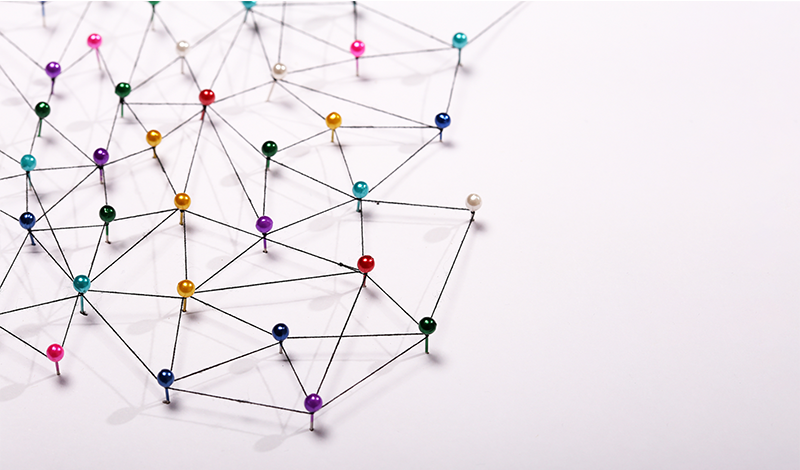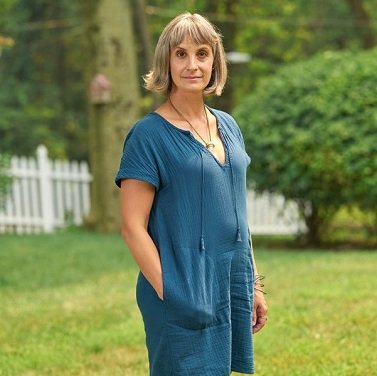Home > Strength In Numbers: End-Of-Life Doula Collectives
Strength In Numbers: End-Of-Life Doula Collectives
by Loren Talbot

While some doulas choose to work solo, there are many end-of-life doulas who have formed collectives around the United States. More and more death workers are recognizing how beneficial collaboration can be when working with individuals who may have higher needs. Additionally, each doula brings different skills, focuses, and areas of expertise to the collective. There are also lessons we can glean from birth workers who have modeled and shown the importance of working in partnership for decades. Whether you have been engaged in providing doula support for years or are just arriving to the field, there are some reasons you may want to consider working with other doulas.
A key aspect to our group is the support we offer each other.
While some doulas choose to work solo, there are many end-of-life doulas who have formed collectives around the United States. Each doula brings different skills, focuses, and areas of expertise to a collective. Additionally, more and more death workers are recognizing how beneficial collaboration can be when working with individuals who may have higher needs. There are also lessons we can glean from birth workers who have modeled and shown the importance of working in partnership for decades. Whether you have been engaged in providing doula support for years or are just arriving to the field, there are some reasons you may want to consider working with other doulas.

A key aspect to our group is the support we offer each other.
The Formation of Collectives
For some the decision to work as a team was immediate. Diane Button from the Bay Area End of Life Doula Alliance talks about how she and her fellow doulas all met. “In 2018, at an INELDA training in San Francisco, a group of us from the San Francisco Bay Area met the first night and decided to carpool each day,” she says. “On the way home, on the last day, we decided to form a group, so we were likely the fastest group ever to come together after an INELDA training.” The alliance has grown, and the core of four doulas has grown to include 10 other doulas whom they refer work to and share clients with as needed. “Our doula community is solid, offering a multitude of services that one person alone could not provide.”
Conceptualizing and growing the Florida End of Life Doula Association was natural for board vice president, treasurer, and founder, doula Shanti Vani. “I really believe in connection,” Shanti says. “I’m always looking for a collaboration and connection, whether it’s as a doula or something else. You know we can’t live alone. We can’t be alone. And connection to me is sort of the antidote to a lot of different problems.” What started as 15 people gathering together in Gainesville prior to COVID has developed into a network of doulas from all around the state. The group’s Facebook page is also open to community members seeking support from doulas.
The structure of a collective and how its business relationships are developed can look different from one group to another. Stemming from the birth doula model as highlighted in this DONA International article, a doula collective can show up in multiple ways. In some cases, doulas may represent as a solo practitioner but have other doulas within their circle whom they have vetted and may rely on. This may be written into a contract that is shared with clients in case of emergency or when backup is needed. In a cooperative or co-op model, doulas often have their own entities but come together to support the personal and professional growth of their businesses. There is also a nonprofit association or collaborative model where members join for the benefits of the collective. Lastly, and less prevalent in death doula circles, is an agency model where doulas may work within a group and are paid by the agency itself.
The Minnesota Death Collaborative, another statewide collective, has a member-based model with individual members, as well as nonprofits and corporate members. With a mission to educate and inform professionals throughout the state, partnerships are essential. “The Minnesota Death Collaborative is a community that is intentionally focused on diversity, equity, inclusion, and access not only amongst its members, but also the roles that the members serve in. While we have many dedicated end-of-life doulas as part of our community—we are not exclusively a doula organization,” says outreach coordinator Kate Wolfe. “We are a community that welcomes all death-related fields into a collaborative environment.”
I think we have a really good synergy between who works with us because we all do come from different backgrounds.
Balancing Strengths
“As doulas come out into their communities, the various ways they can be represented by and talked about is helpful when there are more people involved—everyone’s tapped into different circles,” says Elizabeth Johnson of the Peaceful Presence Project. This ability to bring differences and unique strengths to the collective itself is an asset for both the members and the clients. “I think we have a really good synergy between who works with us because we all do come from different backgrounds,” Elizabeth says.
“We realized immediately that we were all very different, with unique interests and life experiences,” says Diane from the Bay Area ELDA. “As new doulas, we knew we would not have developed the skill set to serve all of our clients’ needs, so we saw this as an avenue for being able to offer a broad range of services for our clients.”
When structuring your collective, consider the skills and perspectives that each member brings. In the case of end-of-life doulas, it may be that some individuals have different strengths, from advanced care directives to sitting vigils, while others have different cultural backgrounds and world views. The strength in the collective stems from those unique experiences that each person shows up with.
Time also plays a factor here. With a team, doulas are able to sit with people for longer periods of time, allowing more support for the dying person. “We supported a gentleman through VSED, which was a seven- to eight-day process. Because we were a team, we were able to offer up to 16 hours of support a day. That was only possible because we worked with this collective model,” says Elizabeth from Peaceful Presence. She goes on to share, “For high-need cases, I don’t know how people are doing it independently.”
The Importance of Partnerships
“Another thing I think is really important with the collective model is the partnerships that are able to grow from that,” Elizabeth says. “We are in partnership and service with seven or eight medical and service providers that make referrals to us when they have a high-needs client case.” With a group of doulas, a collective is better able to support institutions and care facilities that may be operating on a different scale.
Emily Stacken, communications director from the Minnesota collaborative accentuates how important partnerships are for members. “MNDC membership roles include end-of-life professionals, organizations hoping to contribute and support our mission, and are made up of the broader community of people who are curious to learn more about topics that pertain to end of life,” she says.
“The reason we seek to curate collaboration is so that partnerships and resource support can exist,” her colleague Kate shares. “For example, an energy worker and a doula might be able to facilitate two different types of healing and support for their mutual client and their caregivers as they sit and move through the anger and exhaustion of anticipatory grief. Or a mortician, an estate organizer, and an elder law or estate lawyer may help a community navigate the process of sorting through the final disposition of their beloved as well as the physical aspects of death after their loved one has passed. All processes that can be overwhelming without adequate and collaborative professional support.”
Foundational Steps
When looking to establish a collective in your area, it is important to get to know who is doing doula work in your region. Check directories, call other area doulas, and lay the groundwork for establishing the collective by researching resources and possible partnerships.
Diane says, “Don’t rush. Find just a couple of people in your area to partner with to begin. Get to know them, and be sure you all are compatible. It takes time to sort out roles, create a system for intake, generate contracts and forms, choose a name, determine your business plan, and start letting the world know you are there. Along with not rushing, don’t be discouraged if it doesn’t happen quickly. Depending on where you live, doulas may be very new, or you may even be one of the first. Give yourself and your group plenty of time to prepare so when you do start advertising, knocking on doors of hospices and care facilities, and planning community events, you are a solid and cohesive team with a well-thought list of offerings.”
Growing anything takes time—and often, people gifted as “connectors”—to bring it all together. “I started by calling people, collecting email addresses, and asking them what they were doing and seeing who was interested,” Shanti of the Florida collective says. “There’s a lot of folks that did the training, but they were just kind of sitting with it. We had a weekend workshop with maybe about 15 people there, and we literally did write our mission and vision statements, and we brainstormed our values. And it was really wonderful.”
Being willing to take those first steps and sometimes get outside of your comfort zone to build something may be challenging for some. If so, an ease with community-building may be something you are looking for in your collaborators. Depending on your working style, the benefits of working with others may greatly outweigh a solo approach. Elizabeth highlights this sentiment: “Some of us were, before we came into this, working more independently, and now we all look at each other and say, ‘I don’t even know how we did that!’ Most cases we have had in the past year and a half required a lot of teamwork.” Offering those you are supporting not only your abilities, but those of a collective, can be beneficial to both client and doula.
The Author:
Loren Talbot | Director Communications and Partnerships

